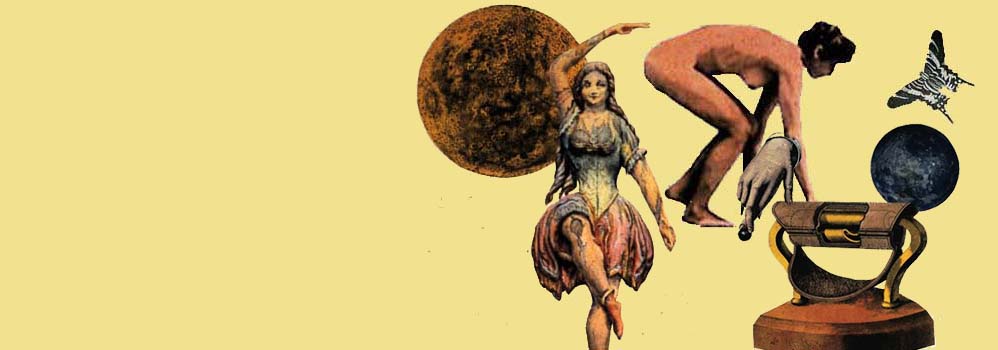Collage


Lawrence‘s work on collage was strongly influenced by Joseph Cornell, a mentor and friend whom Lawrence had studied under between 1955 – 65. Objects and images transformed and captured to a perfect balance of intrigue and delight. As the eye is drawn in, detail entices and evokes a desire to surrender and yield the mind to be lifted into Lawrence‘s world.
Beat-era artist Larry Jordan has been at or near the center of important creative activity in the Bay Area for almost four decades. He is best known for his highly original, surrealist- inspired collage films. Jordan, however, describes himself not as a filmmaker but as a collagist, and he is right in doing so: film is merely a vehicle to bring time and motion into a pictorial assemblage of disparate, often incongruous, elements gleaned from print sources. His library provides the “dig site” for what amounts to an archaelological expedition, one that unearths engraved illustrations that, skillfully selected and artfully combined, create Jordan’s delightfully imaginative universe.
Now, happily, Larry Jordan has decided to “go public” in different media with the very themes and images that make his films so engaging. The large framed collages and boxes – themselves assemblages – have their common origins in the moving collages that distinguish Jordan’s films. As physical objects, however, they bring a new dimension, a tangible solidity, to what has heretofore generally been experienced to the form of elusive, flickering images and projected light. Held in place on walls and in boxes, thereby susceptible to sustained contemplation, Jordan’s scenes invite the viewer to step into a suggested but never confirmed narrative. In fact, in these works there is no single story or meaning to be confirmed. The pleasure and fascination afforded is in the subversion of narrative and the degree to which we as viewers are allowed to become participants, bringing our own “readings” to images and settings that provoke but stubbornly refuse to explain themselves.
In their imagery, allusion, and effects, Jordan’s films such as “Visible Compendium” (1990) bring to mind Jess Collins and Joseph Cornell, both of whom served Jordan as influential mentors. Associating his work with theirs is entirely appropriate, providing useful insight into a shared aesthetic. Jordan was part of the circle of the late poet Robert Duncan and Jess, with whom he continues a long and inspirational friendship.
In the summer and fell of 1965 he worked as Cornell’s assistant in Flushing, New York, where he helped assemble Cornell’s cinematic collage “Legend for Fountains”. Jordan also did cutouts for collages and worked on boxes, in effect serving as Cornell’s collaborator. When he returned to California Jordan finished several films for Cornell which were constructed from found footage. In addition to the film brought back from Flushing there were lessons Jordan incorporated into his own work in ways that liberated and sustained his personal vision. There new works follow in the tradition. Drawing upon images from the past – may redolent of distinctly Victorian cabinet of curiosities – Jordan has achieved in theses remarkable constructions a uniquely symbolist and entirely modern artistic expression.
Paul J Karlstrom Art Historian Paul J Karlstrom is editor of “ON THE EDGE OF AMERICA; CALIFORNIA MODERNIST ART, 1990-1950”, due from the University of California Press in the fall.